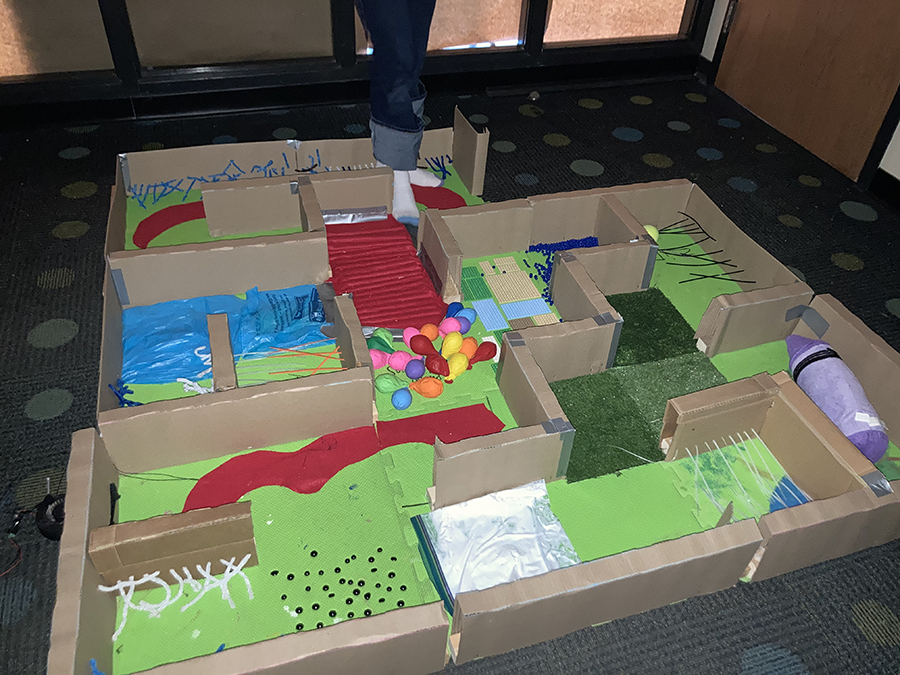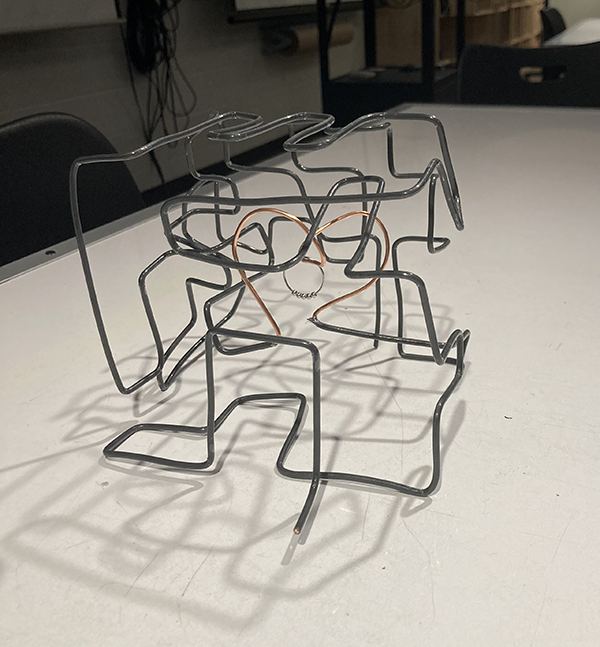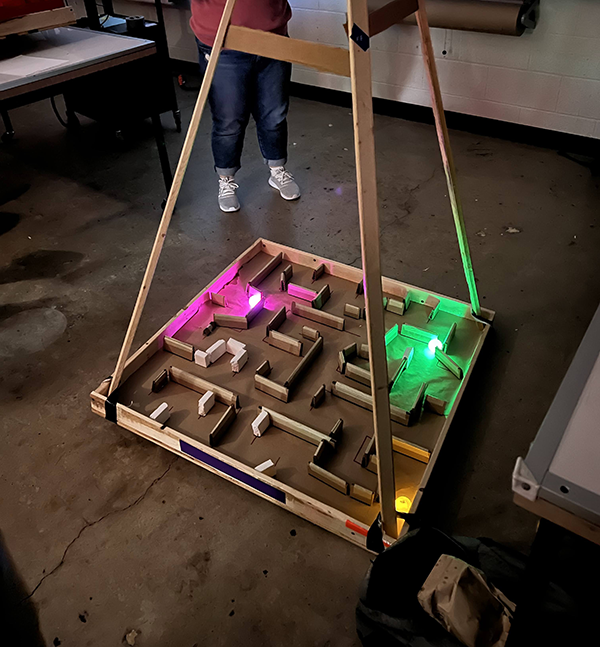Students design and build elaborate mazes for IDeATe course
Students use skills in art, technology, problem solving, project management, user interface, and collaboration to create physical and virtual mazes.
When Nestor Gomez was looking for a topic that combined art and technology for a new course in Carnegie Mellon’s Integrative Design, Arts and Technology Network (IDeATe) program, he found his way to a surprising idea—mazes.
Mazes and labyrinths have a rich culture of art and history that date back to the ancient Greek myth of Theseus slaying the minotaur who had been imprisoned in a labyrinth of complex passages. Ancient Romans later incorporated playful labyrinth designs into their tile floors and the Celts used them in daring games and athletic contests. Today there are elaborate life-size corn mazes in rural fields across America.
But constructing a maze in the physical world requires engineering know-how and designing them in the virtual world requires computer programming skills.
Engineering, computer science, architecture, and design students have enrolled in the Special Topics: Mazes course in nearly equal numbers. Their skillsets vary, but they all had to apply creativity and problem solving to building mazes for the class projects.
Belle Blanchard, a mechanical engineering student, says she has always liked mazes and was interested in the IDeATe courses because they incorporate the artistic with the technical. After having attended a webinar that Gomez, an assistant teaching professor of mechanical engineering, hosted last year, she also knew him to be an especially fun and enthusiastic instructor.

Working with the Arduinos—the microcontroller kits that many of the engineering students used to add sensors, gates, and lights to their mazes—was a good challenge for her.
“I didn’t have a lot of programming experience, so it was really fun to try it out in such a low stakes environment, and it was inspiring to see the cool ways the other students programmed the electronic functionality into their designs,” said Blanchard.
Gomez strives to inspire creativity with lessons that show possibilities and assignments that are made with minimal constraints. Early on he gave the students a simple piece of wire to create a unicursal labyrinth, to demonstrate that, unlike mazes, which have multiple paths that branch off and do not necessarily lead to a center end point, labyrinths have only a single continuous path to the center.
He constructed a 3 x 3-foot wooden tilt table with magnetic walls that the students used to design mazes that a golf ball rolled through. And Gomez taught the students how to generate virtual mazes in Microsoft Excel.
But for their final projects, they were given the freedom to build either physical or virtual mazes, and Gomez says he was blown away by their ingenuity.
The mazes that the students designed and built were mind-boggling to me.
Nestor Gomez, Assistant Teaching Professor, Mechanical Engineering
“The mazes that the students designed and built were mind-boggling to me,” said Gomez.
Tanner Aikens, a mechanical engineering major, was inspired by the modular design of the tilt table to design a maze with electronic sensors that opened magnetic gates. The maze could only be completed once all four gates were opened.

“Designing the first one was challenging, but each of the three following mazes were easier to design,” said Aikens who added, “I got to exercise skills I don’t usually use, and, in the end, it was cool that I was able to construct such reliable systems.”
Another group incorporated sensors that played notes to “Twinkle Twinkle Little Star” if the rolling ball moved through the maze properly.
A tri-level maze, inspired by Dante’s Inferno, took users through artistic representations of heaven, hell, and the forests of Earth.
Another group made a mini-golf maze that could be rearranged to create different courses for playing the game.
Beyond creativity, students learned some important project management lessons. A group who wanted to build a very small-scale three-dimensional maze found that they weren’t able to achieve the precision they needed when laser cutting its parts. Another group spent too much time trying to incorporate a cable car into their design and the rest of the maze suffered as a result.

The students also had opportunities to collaborate and observe how users interfaced with their designs. Gomez gave each student a small book of mazes that showed the difference between navigating a maze that you could see in its entirety versus those that didn’t reveal what was next. The students were tasked with figuring out the mazes themselves and then using the book to observe others working through the mazes. Gomez said it was a good exercise for engineers, computer programmers, and artists to observe how others use and adapt to what they create.
Aikens and Blanchard formed an unexpected collaboration for their final project. Aikens and his partner wanted to further explore the idea of not being able to see the entire maze and were designing a maze that the users would walk through. Meanwhile Blanchard and her partner were interested in incorporating a tactile experience into their maze. The two pairs teamed up to create a 6 x 6-foot maze that users walked through blindfolded, using only the various surfaces as clues to guide them through the maze.
Aikens was pleased that he accurately predicted that all of the users believed they were working through a much larger space. And Blanchard said that even though she is not typically a fan of group work, this collaboration, like all of the work for this course, was a really good experience.
Gomez has taught the class during the last two fall semesters and looks forward to teaching it again in the fall of 2023.
